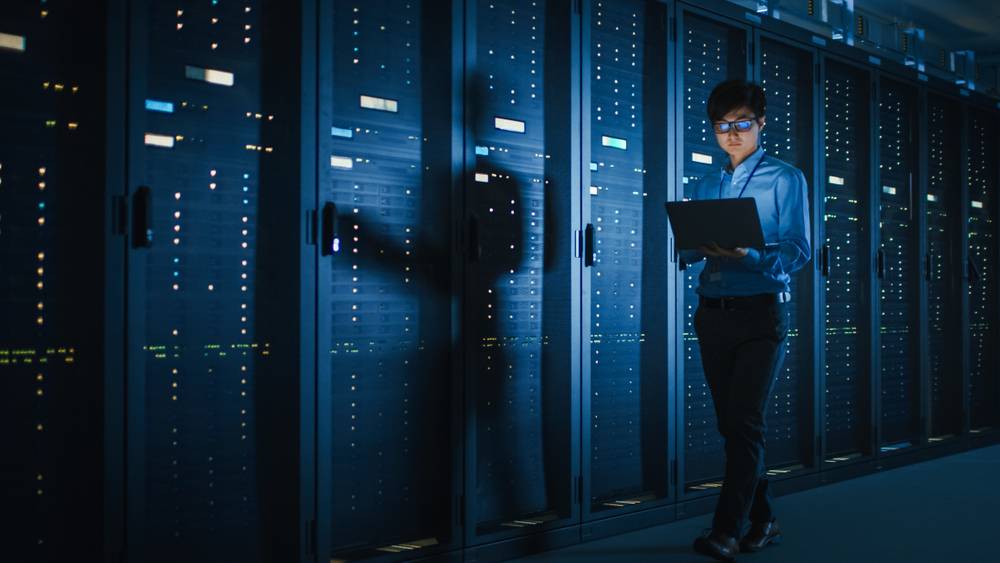Hello everyone, welcome to yet another insightful article on what Cybersecurity is.
In this session, we want to break down Cybersecurity from definition to components to types to threats and, finally, the challenges facing Cybersecurity.
By the end of the reading, you’ll be well vast in what Cybersecurity entails.
In summary, we’ll cover:
- What is Cybersecurity?
- Components of Cybersecurity
- Types of Cybersecurity
- Types of Cybersecurity Threats
- Challenges Facing Cybersecurity Threats
Let’s get started right away!
What Is Cybersecurity?

Cybersecurity refers to all the technologies, tools, methods, and processes used to protect data, networks, and computer systems from unauthorized access by cyber attackers.
The main goal of Cybersecurity is to protect organizational digital assets from internal and external threats caused by natural disasters or hackers.
The three principles of Cybersecurity include confidentiality, integrity, and availability.
These three principles are the pillar of Cybersecurity.

Confidentiality asserts that the only individuals that can access functions and sensitive information are those allowed to.
With confidentiality, some users are blocked from accessing information.
Integrity is about ensuring that data is accurate, authentic, and safeguarded.
That means only authorized people can add, alter or remove functions or sensitive information.
Lastly, availability asserts that information must be made available to authorized parties whenever needed.
Through these three pillars, organizations can develop a robust Cybersecurity framework that helps reduce the risk of cyberattacks.
And in the unfortunate event that it happens, the business can get back to its feet without major losses.
Components of Cybersecurity

Three elements of Cybersecurity work together to ensure a strong defense against cyber attacks.
People
The employees of an organization must understand the principles of Cybersecurity, the risks involved, and how they minimize these risks.
Employees must understand the importance of using a strong password, backing up data, avoiding clicking links, and opening unusual email attachments.
Processes
Organizations must have a solid framework that guides their Cybersecurity approach in case of an attempted or successful cyber attack.
This involves having a framework that helps detect, identify, and respond to threats.
The framework should also have a guideline on how to recover from attacks.
Part of the process is having mitigation measures for potential attacks.
Technology
The technology involves the security tools to protect the systems and devices from cyber attacks.
Some of the technologies that protect smart devices, computers, and routers include email security solutions, malware protection, antivirus protection, firewalls, and DNS filtering.
These three components of Cybersecurity work together to avert cyber threats and attacks.
Types of Cybersecurity

Technology is growing rapidly.
Finance, hospitals, retail, military, energy, education, and different sectors are increasingly adopting new software at a staggering rate.
That means more information is stored online and can only be accessed through wired and wireless communication networks.
The sensitive information online lures criminals, making it of utmost importance to secure this information to protect it from data breaches.
There are several sub-domains of Cybersecurity that help organizations stay safe against attack.
Here are the main types of Cybersecurity;
Network Security
Network security involves the software and hardware used to protect internal computer networks and infrastructure from authorized access, disruptions, intruders, misuse, and other abusers.
Organizations increasingly use complex networks, which increases devices, data, location, and users’ vulnerability.

And so, organizations use network security tools such as Virtual Private Networks (VPNs), firewalls, antivirus, and anti-malware to protect their systems and networks from internal and external threats.
Again, strong network security prevents downtime and reduces potential vulnerabilities.
Cloud Security
Cloud security helps companies using cloud service providers like Azure, Amazon, Google, web services, AWS, and Rackspace to protect their information stored in the clouds.
Application Security
Application security involves securing web and mobile applications.
Usually, security in applications is installed during the development stage to ensure it is secured before being released in the market to reduce vulnerability.
Once it’s released, patches and updates may reinforce the security further.
Using application security, organizations can test apps and detect any threats in good time, which makes it easier to protect them further using encryption.
Critical Infrastructure Security
Critical infrastructure organizations are more susceptible to cyber-attacks.
Thus, to ensure the essential infrastructure services have a buffer against cybercriminals, they must have organizational and technical measures in place to avert any cyber threats.
Internet of Things (IoT) Security
Internet of Things includes electric and electronic devices such as motor vehicles, refrigerators, washing machines, smart fire alarms, thermostats, and light bulbs, among other things, that connect to the internet directly without human intervention.
Smart devices are increasingly at risk, given the opportunities offered by the Internet of Things.
And so, IoT security involves putting measures in place to ensure these devices are safe.
Disaster Recovery and Business Continuing Planning
Apart from cyber criminals, disasters or other natural events can compromise an organization’s information security.
In such circumstances, sensitive data must be protected to ensure business continuity after the disaster.
That means organizations need a plan to back-up data in case of any eventualities.
User Education
User Education is about educating employees on the monitoring, processes involved in case of an attack, and the plans they can take to respond.
Here employees are educated on computer security, the best practices in the industry, organizational policies and procedures, and reporting any malicious activities threatening operations or data loss.
Types of Cybersecurity Threats

Individuals and organizations face several threats, including:
Malware
Malicious software includes ransomware, trojan horse, botnets, virus, spyware, and adware.
Though the different types of malware are used differently, the bottom line is that attackers use malware to gain access to an organization’s network and transfer data from its storage.
Malware also disrupts computer systems and blocks access to computer resources.
Phishing
A phishing attack is a form of social engineering where attackers send fraudulent links, texts, or emails that seem to come from reputable companies.

The messages usually ask for sensitive information such as login details, credit card data, etc.
Phishing is the most common type of cyberattack.
SQL Injection
Structure query language (SQL) injection is about launching an attack by inserting a malicious code to explore an SQL server’s vulnerability.
If attackers find a vulnerable point, an SQL injection can affect all the websites that use the codes.
Denial-of-Service (DoS) Attack
Denial-of-Service is where attackers flood a network, computer, or server with traffic to prevent users from accessing them.
Disgruntled employees often launch these attacks.
But sometimes, the attack is financially motivated.
Sometimes attackers may use DoS to make a service unavailable.
DoS is using multiple machines or computers to flood a network or server and hinder access.
Man-In-The-Middle Attack (MITM)
A man-in-the-middle attack is where an attacker poses as a third party in the middle of two users and intercepts the communication.
MITM’s primary goal is to steal users’ information.
Attackers may pose as employees to steal data or even launch bots that generate fake messages.
Brute Force
Hackers use brute force to get login information, encryption keys, passwords, and Personal Identification Numbers (PINs).
Attackers will guess possible combinations until they find the right one to hack the systems and steal data.
Challenges Facing Cybersecurity

Cyber threats pose huge challenges to Cybersecurity as the rate of cyber-attacks keeps increasing.
Big and small companies are at risk of losing sensitive information, which not only disrupts their service delivery but also damages their reputation.
Here are the factors that increase the risk of cyber attacks.
Rapidly Evolving Risks
Information technology is ever-evolving.
Technology that was powerful ten years ago is currently obsolete.
The ever-evolving technology is a breeding ground for new attacks as many organizations find it challenging to keep up with the new tech updates.
Even smaller organizations without an IT department may find it challenging to keep up.
High-Speed Internet
High-speed internet makes it easy to change data in real time.
An increase in bandwidth translates to high-speed internet, which is great but threatens an organization’s information systems.
That means cyber attackers can also upload loads of data online, compromising data security.
Remote Working
With the pandemic, more and more employees were working from home.
Some employees use public Wi-Fi when traveling, which can be risky because they may connect to rogue hotspots, licking crucial company information to cyber attackers.

Further, remote work increases the risk of losing devices that may contain company information.
For that reason, the increased rate of remote work increases organizations’ risk of cyber attacks.
Collection of Large Quantities of Confidential Data
The more information an organization has to store, the more risk they are of a cyber criminal breaching and stealing their data.
Even small organizations tend to accumulate sensitive customer information in months.
Bring Your Own Device (BYOD)
Bring Your Own Device policy is an excellent way to reduce the cost of devices that the organization acquires.
However, employees using their own devices introduces a new set of Cybersecurity risks.
Employee-owned devices are more susceptible to cyber attacks, as the devices are not subject to the same security measures as organization-owned devices.
Organized-State Sponsored Hacker Groups
Hackers are increasingly becoming more organized and systematic in their operations.
There are different groups of hackers.
Some are dedicated to cyberterrorism, others to cyber warfare, while many are committed to cyber espionage.
Given how organized they are, the rate of cybercrime is increasing, and so is the magnitude.
Conclusion

Cybersecurity protects individuals’ and organizations’ data from cyber threats and attacks.
Organizations can choose one or several types of Cybersecurity to ensure their data is safe depending on their devices, systems, and networks.
A well-devised Cybersecurity framework allows organizations to identify threats and act on them in record time before jeopardizing their operations.
In essence, a cyberattack is an ever-present threat to digital information.
For that reason, the importance of Cybersecurity cannot be underestimated in modern times.
It’s better to take action now.
FAQs

Why is Cybersecurity important?
Cybersecurity is important for many reasons;
The rising cost of data breaches includes repairing the organization’s reputation, purchasing new security systems, etc.
Cyberattacks are becoming more dangerous with the rise of ransomware attacks, Distributed Denial of Service (DDoS), and state-sponsored hacking.
Hacking tools are increasingly becoming readily available.
What is the definition of Cybersecurity?
Cybersecurity refers to using techniques and tools to protect internet-connected devices, services, and networks from attackers.
Cybersecurity defends a company’s mobile devices, computers, and electronic systems.
It allows a company to avert the risk of identity theft, financial losses, and data breaches.
What is a Cybersecurity Threat?
A Cybersecurity threat refers to malicious attacks that seek to damage or steal data to disrupt an organization’s operation.
Criminals with bad intentions usually perform this unlawful access to data.
Cyberthreats include:
-Malware
-Denial-of-Service
-Phishing
-Man in the middle
-SQL injection
-Password attacks
What is Cybersecurity Insurance?
Cybersecurity insurance, also known as liability insurance, is designed to help businesses, small and medium enterprises, and corporates protect themselves against cyber threats and security breaches.
Cybersecurity insurance reduces the financial risk of losing health records, credit card information, account numbers, and social security numbers to criminals.
What is a Cybersecurity Professional?
A Cybersecurity professional is someone with a background education in Computer Science, Programming, Cybersecurity, or a related field.
They may also have a certification or clearance to work in Cybersecurity.
These professionals design and develop solutions to defend digital information from cyber threats and attacks.
What is a Cybersecurity Engineer?
Cybersecurity engineering refers to creating and managing software, hardware, and security policies to protect data, systems, and networks.
It combines computer science, electrical engineering, and mathematics.
Cybersecurity Engineers incorporate digital defense, digital forensics, and security policy to manage systems’ hardware and software.
What is a Cybersecurity Analyst?
A Cybersecurity Analyst’s primary role is to understand a company’s IT infrastructure thoroughly, evaluate it, and constantly monitor the systems and network to discover threats that could potentially breach the systems and networks.
They also develop Cybersecurity strategies to enhance a company’s data by protecting sensitive information.
What are the three major types of Cybersecurity?
The three major types of Cybersecurity involve:
-Network Cybersecurity involves using effective Cybersecurity measures to prevent unauthorized access
-Cloud Cybersecurity involves protecting sensitive data stored in the cloud
-Application security is about security devices such as laptops, mobile devices, the web, and so on
What are the examples of Cybersecurity?
Here are examples of Cybersecurity:
-Encryption refers to encrypting data in transit, storage, and use
-Authentication is the process of securely identifying digital entries and people
-Authorization refers to specifying access privileges to information security and computing resources
-Network security is using techniques to secure networks
Is Cybersecurity a good career?
Yes, It is.
According to the Bureau of Labor Statistics, Information Security Analysts earn an average of $102,600, translating to $49.33.
The bureau projects a 33% increase in employment opportunities from 2020 to 2030.
That translates to around 16,300 job openings annually over the decade.
What is the main purpose of Cybersecurity?
Cybersecurity aims to protect individual and organizational assets from cyber attacks.
The main goal is to have a Cybersecurity framework in place to reduce the risk of theft and damages caused by attackers.
It’s geared towards eliminating human errors, creating security awareness, and enhancing risk management.
What are the three main important things to know about Cybersecurity?
-Confidentiality: Gives access to those who are allowed to use data and blocks those who aren’t allowed
-Integrity: Ensures data is accurate, authentic, and secured; it prevents unauthorized access
-Availability: Ensures that information is available to authorized users at all times
What are the top three Cybersecurity Threats?
The most common types of Cybersecurity Threats include:
-Malware: trojans, viruses, worms, Adware, cryptojacking, fileless malware, spyware, and rootkits
-Social Engineering Attack: baiting, phishing, piggybacking, vishing baiting, tailgating, smishing, and pretexting
-Man-in-the-Middle Attack: Wi-Fi eavesdropping, email hijacking, DNS spoofing, IP spoofing, and HTTPS spoofing
What is the common misconception about Cybersecurity?
All our vulnerabilities are known.
There are new vulnerabilities every day.
Companies must conduct risk assessments daily and backup data in case of any eventualities.
It won’t happen to us: Every organization, big or small, is at risk of cyber attack.
My company protects my devices: It’s your responsibility too.









